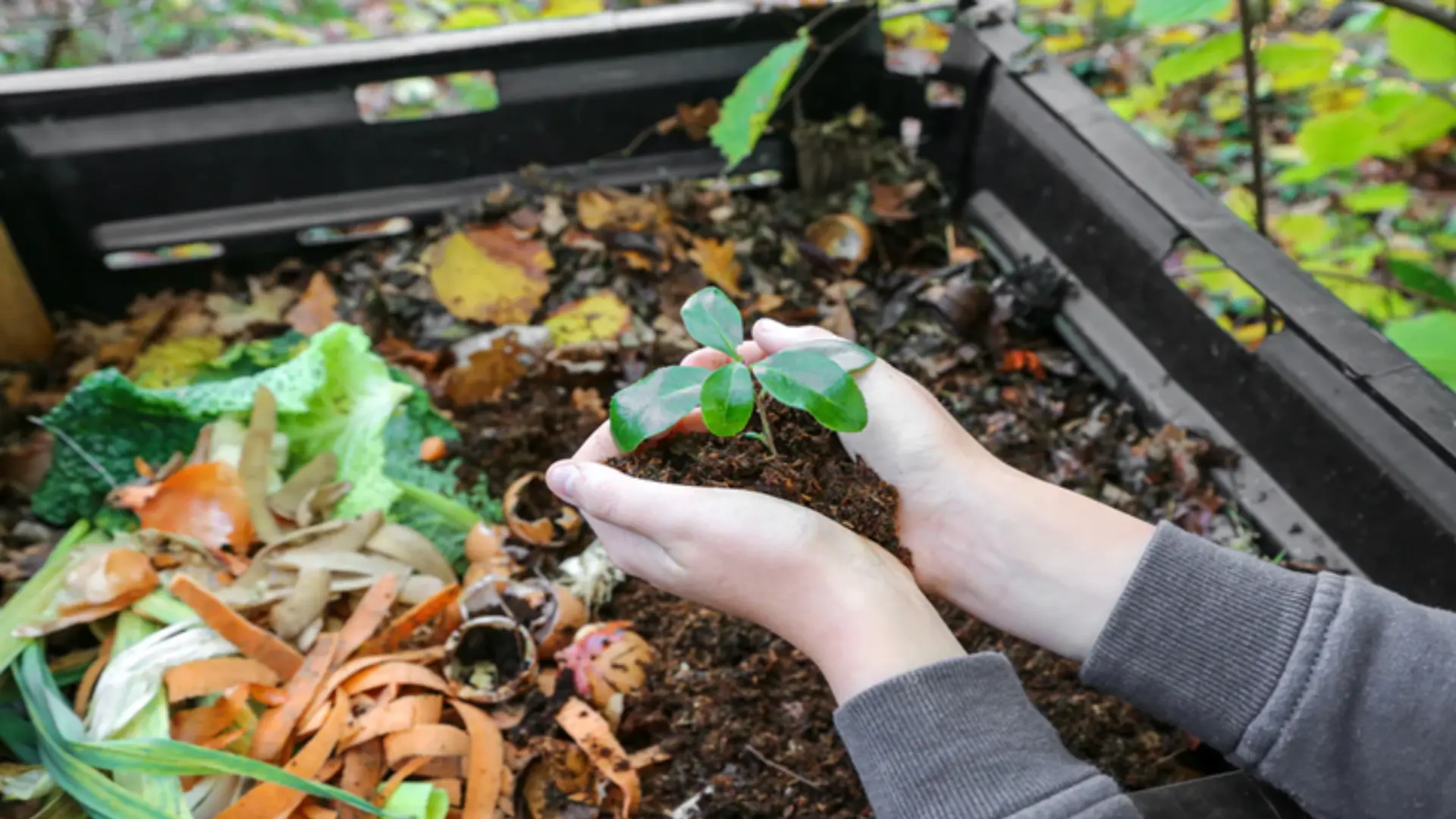Harnessing the Potential of Food Waste Composting: Toward Green Revolution in Circular Economies
What is the Problem of Food Waste in Developing World?
Food waste in developing economies has reached alarming proportions, with nearly half of their municipal solid waste being discarded food. These wastes often mingle with other trash, ending up in landfills and contributing significantly to environmental degradation. One way to address this problem is through food waste composting. Food waste composting is the process of breaking down organic materials, such as food scraps, yard waste, and manure, into a nutrient-rich soil amendment.
Notably, they become potent sources of greenhouse gases, particularly methane, constituting over 70% of the emissions from these countries’ landfills. Beyond air pollution, these wastes contaminate the soil and water bodies, facilitating the proliferation of disease.
In response, many developing nations have adopted Vision Agendas to navigate this crisis sustainably. These agendas aim to curtail the increasing waste disposal issues and foster economic benefits through strategies like waste-to-energy transformation, composting, and recycling. These comprehensive strategies include encouraging community participation and enhancing waste management infrastructure. Addressing this pressing food waste problem is essential to sustainable development and environmental conservation in these regions.
What are the Common Methods to Mitigate Landfill Waste?
Various strategies have been employed to reduce landfill waste, with anaerobic digestion, composting, and gasification being popular choices. These methods offer greener alternatives to landfilling by mitigating methane emissions, reducing leachate production, and enabling waste-to-energy conversion. However, they often require more intricate waste handling and processing, thus elevating the overall cost.
A cost-effective solution in this context is transforming food waste into organic fertilizer via food waste composting, which reduces landfill waste and contributes to sustainable agriculture. This approach is notably prevalent in several European Union countries, effectively repurposing their municipal solid waste into valuable compost. Despite their challenges, these proactive measures are crucial for sustainable waste management. Their potential to curb landfill waste and environmental pollution further underscores their significance in contemporary waste management.
How Can Food Waste Composting Be Used in Developing Nations?
High volumes of food waste in developing nations offer a significant opportunity for composting, which can enhance soil fertility and boost agricultural output. Though traditional composting methods are currently in place, these often yield compost that falls short of international quality standards, marked by excessive moisture, high inorganic content, unpleasant odors, and subpar nutritional value. Thus, it is vital to introduce and promote advanced composting techniques that control moisture levels, minimize inorganic content, mitigate odor issues, and enrich the nutrient profile.
Implementing these improved methodologies can cause high-quality compost that contributes to sustainable farming practices and mitigates the pervasive issue of food waste. This dual benefit underscores the potential of food waste composting as a strategic solution in the waste management landscape in developing countries.
What Techniques Can Improve the Quality of Compost?
Numerous amendments, additives, and innovative techniques can enhance food waste composting quality and expedite composting. This includes chemicals, microorganisms that expedite degradation, bulking agents, natural minerals such as zeolites, and biochar derived from waste biomass. Zeolites, for instance, have distinctive properties, allowing them to absorb surplus moisture, foster conducive aerobic conditions for microbes, and sequester excess ammonia.
Biochar, generated through pyrolysis of biomass in oxygen-limited conditions, also serves as a promising amendment, improving nutrient retention and stability of compost. Thus, using these methods and materials not only boosts compost quality but also optimizes the food waste composting process, aiding in the effective management of food waste and advancing sustainable agriculture practices.
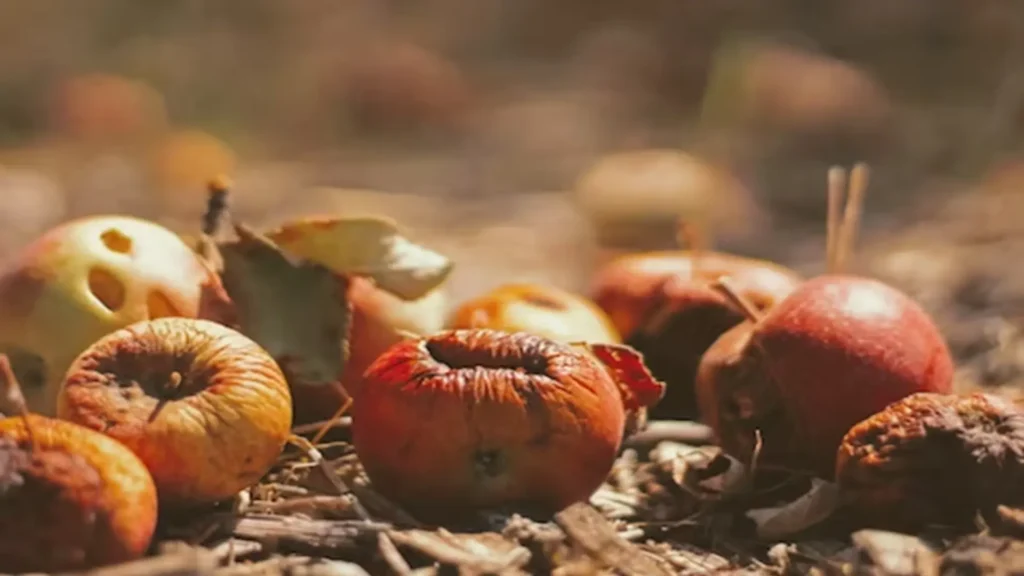
What is the Potential Impact of Improved Composting in Circular Economies?
The potential impact of improved composting in developing countries is multi-faceted and substantial.
- First, enhanced food waste composting techniques offer an effective solution for managing the escalating food waste issue, reducing environmental pollution and greenhouse gas emissions.
- Second, converting this waste into nutrient-rich compost can improve soil fertility, bolstering agricultural productivity and food security.
- Third, such practices can foster circular economies by turning waste into valuable resources, stimulating economic growth.
- Fourth, it presents opportunities for job creation in the waste management and agriculture sectors.
Thus, advanced composting practices address environmental concerns and promise socio-economic benefits, paving the way toward sustainable development in these regions.
How Does the Composting Process Work?
Food waste composting is a sophisticated biological process that involves the orchestration of various microorganisms, primarily fungi and bacteria, to break down complex organic matter into simpler, nutrient-rich products under aerobic conditions. Therefore, understanding the intricacies of this process is crucial for efficient compost production. The composting process’s key factors include pH, moisture content, aeration rates, and temperature, which should be monitored and regulated to ensure optimal microbial activity. Substrate characteristics also play a significant role in the composting process.
These encompass nutrient content, particle size, and the Carbon/Nitrogen (C/N) ratio. A balanced C/N ratio fosters microbial growth, accelerating the decomposition process. Appropriate particle size facilitates aeration and heat dispersion, improving the composting process’s efficiency. Effective composting hinges on a synergistic interplay of various biotic and abiotic elements. By optimizing these factors, the composting process can be fine-tuned to produce high-quality compost in a shorter timeframe, serving as a viable strategy for waste management and soil enrichment in developing regions.
What Are the Different Phases and Microbes Involved in Composting?
Composting is a multistage process comprising the mesophilic, thermophilic, cooling, and maturation phases, each dominated by distinct microorganisms contributing significantly to the process’s success. For example, in the mesophilic phase, the process is started by a consortium of mesophilic microorganisms that breaks down the organic matter. Notable bacteria involved at this stage include members of the Acidovorax family, Bacillus badius, and various Pseudomonas species adept at degrading food waste.
Following the mesophilic phase is the thermophilic phase, characterized by a substantial rise in temperature because of microbial activity. This phase is driven by heat-loving, or thermophilic, microorganisms, which further degrade the organic matter and contribute to the sanitization of the compost by destroying pathogens and weed seeds. Post the thermophilic stage, the compost cools down, marking the onset of the cooling phase.
During this phase, mesophilic microorganisms regain dominance, continuing the breakdown process. Finally, the maturation phase ensues, during which the compost undergoes further degradation and stabilization. This final phase is crucial as it ensures the compost is safe and beneficial for plant growth.
Understanding the microbiology of composting is paramount as each phase, and its corresponding microbial players collectively contribute to producing nutrient-rich, quality compost. This knowledge can be harnessed to optimize the food waste composting process and make it more efficient and effective in managing food waste, especially in the developing world.

What Are the Different Methods of Composting Organic Waste?
There are different methods of composting organic waste, such as aerobic and anaerobic composting. Aerobic composting involves the oxidation of organic compounds by microorganisms in the presence of oxygen, producing carbon dioxide, nitrate, and nitrite. Thermophilic bacteria break down complex organic materials in this process. Anaerobic digestion (AD) is ideal for highly wet organic waste, producing biogas and nutrient-rich digestate beneficial to plants and soil.
A popular food waste composting method is vermicomposting, which uses earthworms and microorganisms to decompose organic waste. The earthworms consume organic material and produce nutrient-rich castings. This method is beneficial for breaking down organic matter into a nutrient-dense, water-soluble form readily available for plant uptake.
Bokashi composting, an anaerobic process, employs specific microbes inoculated on the brain mixed with organic waste. The waste ferments in a sealed bin, and the resultant compost, though it requires further processing, is rich in nutrients and beneficial microbes. As a result, it is ideal for composting kitchen scraps, including items typically avoided in compost, like meat and dairy. Sheet composting, or lasagna composting, involves layering green (nitrogenous) and brown (carbonaceous) organic materials directly on garden beds. This method has the advantage of being low-maintenance and, over time, decomposes to enrich the soil directly where plants grow.
Trench composting involves digging a trench and filling it with kitchen waste, yard waste, and other compostable materials. The organic material is then covered with soil and left to decompose. This method is great for composting larger volumes of waste and can strategically enrich specific areas of your garden. Each composting method has unique benefits and is suitable for different types and quantities of organic waste. The right food waste composting method’s selection can largely depend on individual circumstances, such as the type of waste available, space, and the desired composting speed.
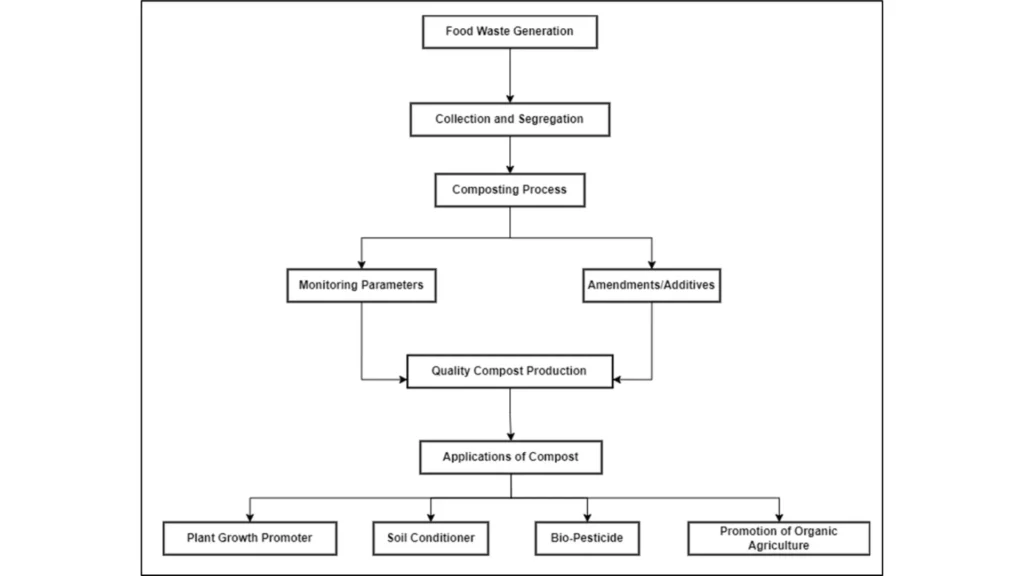
What Are the Various Composting Techniques Based on Reactor Types, Aeration Rates, and Temperature Shifts?
Various composting techniques are used based on reactor types, aeration rates, and temperature shifts. Windrow composting involves mixing and stacking raw materials in narrow rows that are frequently agitated. It takes 12 to 20 weeks to complete. The aerated pile method, which can be opened or covered, aerates the compost through a blower, taking 10 to 13 weeks to mature. In-vessel composting is done in drums or channels using a controlled aeration system to provide optimal conditions, accelerating the decomposition process.
This method has a higher process efficiency than other methods as windrows. Static pile composting, also known as passively aerated windrow composting, involves creating a compost heap with layers of organic material and a network of PVC pipes for aeration. This process typically takes 3-4 months for decomposition to complete and is especially beneficial for large-scale operations because of minimal maintenance needs.
The forced aeration static pile method further enhances the efficiency of static pile composting by actively forcing air through the piles using blowers. This method can complete composting in as little as 3-6 weeks. Another technique is Rotary drum composting inside a rotating drum or vessel. The continuous movement facilitates the aeration and mixing of the materials, accelerating the decomposition process.
In addition, because of its contained nature, it helps control odor, pests, and temperature more effectively, usually completing the composting process within 2-4 weeks. Finally, the Aerated Static Pile (ASP) composting method involves a large pile of organic materials, typically placed over a pipe network that delivers air to speed up the decomposition process. The ASP method is efficient and can quickly process large amounts of waste, typically 3-6 weeks.
Then there is Aerobic In-vessel composting. This method is characterized by fully enclosed vessels where composting materials are regularly mixed and aerated, accelerating the composting process. In addition, it offers good control over key environmental parameters such as temperature, moisture, and aeration, making it suitable for treating organic waste with high moisture content or potential odor issues. Last, Anaerobic In-vessel composting is like its aerobic counterpart but occurs without oxygen.
As a result, the process yields methane that can be collected and used as a renewable energy source. This method is commonly used for organic waste with high moisture content, like food waste or manure. These techniques differ in their decomposition rates, space requirements, types of organic waste they can process, and the quality of compost produced. Choosing the right method depends on the operation’s specific requirements, including the scale, available resources, and desired compost quality.
What is Vermi-composting and How Does It Work?
Vermi-composting, a unique and efficient composting method, leverages the digestive prowess of worms to convert organic waste into simpler, nutrient-dense components. Specific types of worms, such as red wigglers, are typically employed in this process. They consume the decomposing organic matter, transforming it into worm castings, a high-quality natural fertilizer that enhances plant growth.

While vermi-composting does not achieve the high thermophilic temperatures associated with other composting techniques, it still remarkably neutralizes weed seeds and disease-causing pathogens. This is largely attributed to the biological activity within the worm’s gut that effectively breaks down potential threats, leaving a fertile compost that’s safe and helpful for horticultural uses. By exploiting the natural digestive mechanics of worms, vermi-composting serves as an innovative and ecologically sound solution for managing organic waste. It offers a practical, environmentally friendly approach to transforming organic waste into a valuable resource that bolsters plant health and productivity.
What Factors Influence the Composting Process?
Food waste composting is a complex process influenced by various parameters, including temperature, pH, aeration rates, moisture content, and feedstock composition. Feedstock composition is determined by nutrient content, particle size, and C/N ratio. Optimal moisture content for efficient composting ranges from 35% to 60%, although some researchers have also suggested 50% to 70%. Aeration, crucial for microbial activity, can be achieved by forced aeration, natural convection, or regular turning of feedstock.
Increased air pressure aids microbial activity, degrading organic matter and producing gases, increasing internal air pressure. This air also dissipates accumulated heat and removes excess moisture and CO2. During composting, the pH drops because of acid formation but increases from acidic to alkaline because of the bio-oxidation of compost materials and the release of free NH3.
How to Do Carbon/Nitrogen Ratio and Temperature Impact Composting?
An optimal C/N ratio for composting is 25:1 to 35:1, as carbon and nitrogen are vital for microbial decomposition. However, ratios below 30:1 can lead to unpleasant odors from NH3, and ratios above 30:1 may result in slower decomposition because of nitrogen deficiency. Temperature plays a critical role in composting, as temperature changes directly affect microbial activity, organic matter degradation, and the drying and sanitizing of feedstock. Particle size affects microbial efficiency, with smaller particles offering more surface area for degradation. The final compost must also meet guidelines for heavy metal and pathogen concentration. All these parameters are interconnected, influencing each other and the overall composting process.
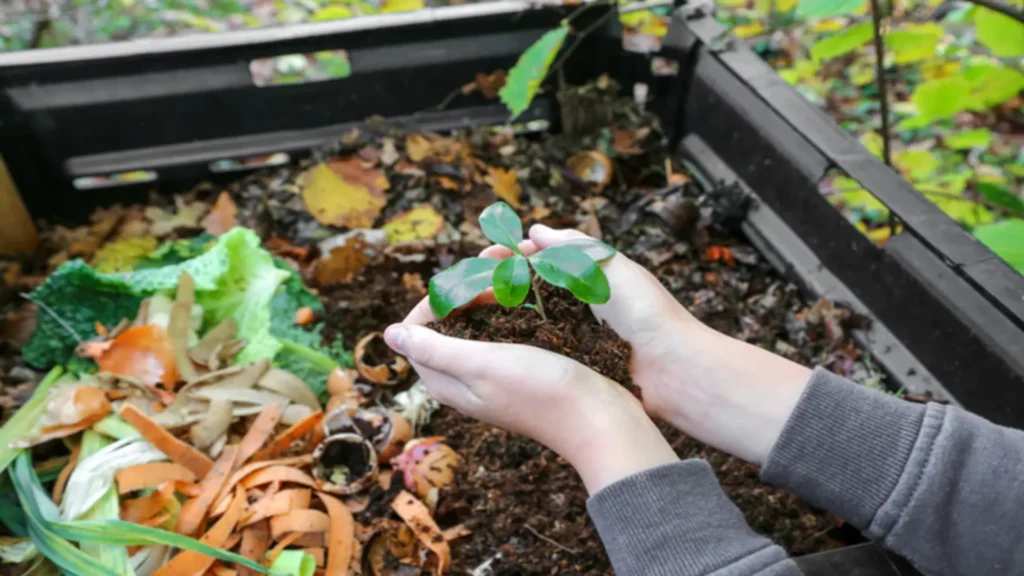
What are the Challenges in Composting Food Waste in Circular Economies?
Food waste composting is common in several circular economies, using the high nutrient and organic content in food waste. However, challenges such as unpleasant odors, high moisture content, electrical conductivity, and low nutritional value often reduce the quality of the compost, making it inconsistent with local and international standards. In addition, the total nitrogen in the compost suggests that the food waste composting process is insufficient due to the low conversion of organic nitrogen to ammonium and nitrates.
What Techniques Can Optimize the Composting Process?
Enhancing the food waste composting process requires the implementation of several strategic techniques. Natural minerals or specific additives like zeolites and black lava, known for their absorbent properties, can significantly reduce moisture, capture heavy metals and ammonia, and retain nitrogen. This can lead to a more balanced, nutrient-rich compost. In addition, incorporating organic residues such as wood shavings, sawdust, and dried leaves proves beneficial as they serve dual purposes – acting as bulking agents to facilitate airflow and breakdown and providing an additional source of organic matter that enriches the final compost.
A pivotal element in the food waste composting process is the introduction of microbes and enzymes, the biological catalysts that degrade complex and potentially harmful substrates. This can expedite the composting process, making it more efficient and effective. Furthermore, a symbiotic combination of different microbes and enzymes can yield even more impressive results, generating higher-quality compost in a shorter timeframe. Such strategic techniques optimize the composting process and produce a more nutrient-rich and beneficial compost that can significantly enhance soil fertility and plant health.
How Can Zeolites and Biochar Improve Composting?
Natural zeolites are interesting due to their high cation exchange capacity, sorption, and ability to act as a bulking agent, which can enhance the food waste composting process. Zeolites absorb excess moisture, provide aerobic conditions for microbes, and inhibit the conversion of ammonium and nitrate ions to free NH3, controlling nitrogen losses and odors. Zeolite can increase the concentration of nutrients like Zn, Mn, K, and Na through ion exchange.
It can alter the pH of the compost to favor microbial activity, degradation, and reduced greenhouse gas emissions. Biochar, a recalcitrant organic carbon compound formed by heating biomass feedstock, can also optimize composting. As an amendment to composting, biochar can improve soil health and remediate pollutants. Its unique carbonaceous structure provides adsorption sites for dissolved ions, and its microporous structure allows moisture absorption.
How Does the Introduction of Microbes Enhance the Composting Process?
The introduction of microbes can aid the food waste composting process. Microbial communities dominate each stage of composting, degrading the composting materials. Their secreted enzymes catalyze the breakdown of the substrate into simpler components that can be absorbed by the cells.
Certain microbes possess unique physiological mechanisms that can optimize the composting process, including rapid degradation of composting feedstocks, production of bio-thermal energy, and rapid temperature rise at the beginning of the composting process. Overall, using natural zeolites, biochar, and microbes, the quality and current food waste composting technology in circular economies can be significantly improved, potentially achieving compost maturity and stability.
How Does Compost Act as a Soil Enhancer?
Compost is a natural soil enhancer, replenishing the soil with vital organic matter and nutrients, thus diminishing reliance on synthetic fertilizers. It enhances the agricultural viability of regions by augmenting soil organic matter, bolstering soil moisture retention, moderating salinity in alkaline soils, and mitigating nutrient leaching, all of which contribute to a more fertile, resilient soil structure.
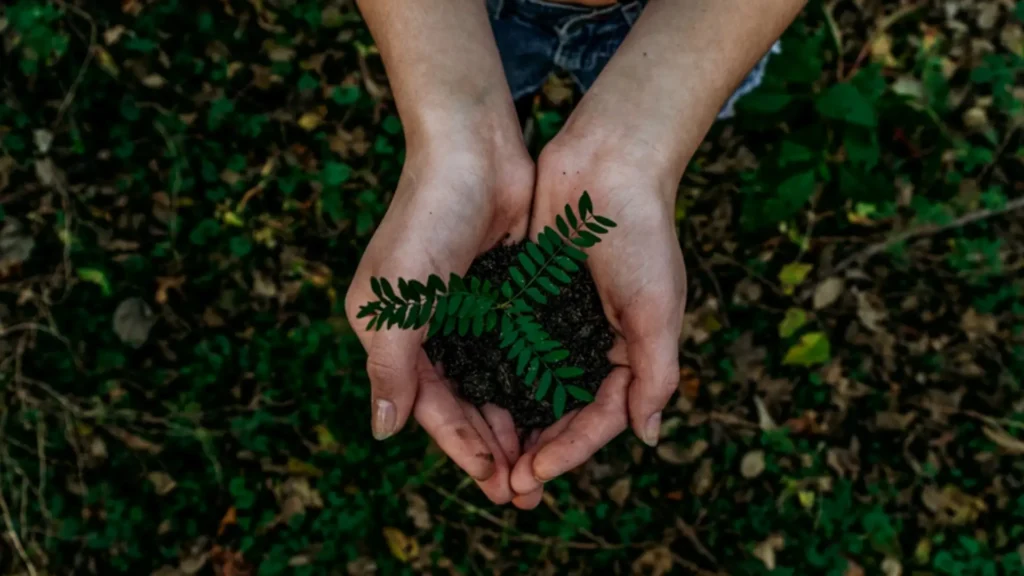
What Role Does Compost Play in Encouraging Plant Development?
Compost propels plant development by positively influencing plant growth’s biochemical, physiological, and structural aspects. In addition, scientific research underscores that compost bolsters the growth and yield of various crops, potentially providing an effective, eco-friendly alternative to conventional synthetic fertilizers.
How Does Compost Function as a Natural Bio-Pesticide?
Compost is a natural bio-pesticide, providing a robust defense against plant diseases and soil-borne pathogens. Compost fosters the proliferation of beneficial biocontrol agents within the plant’s rhizosphere, effectively mitigating disease severity and promoting a healthier plant ecosystem.
How is Composting Beneficial to Organic Agriculture?
Food waste Composting bolsters organic agriculture by ameliorating soil health and boosting crop yields while minimizing nutrient runoff. The transformation of substantial organic waste into nutrient-rich compost promotes the ethos of organic farming and lessens dependence on chemically based fertilizers.
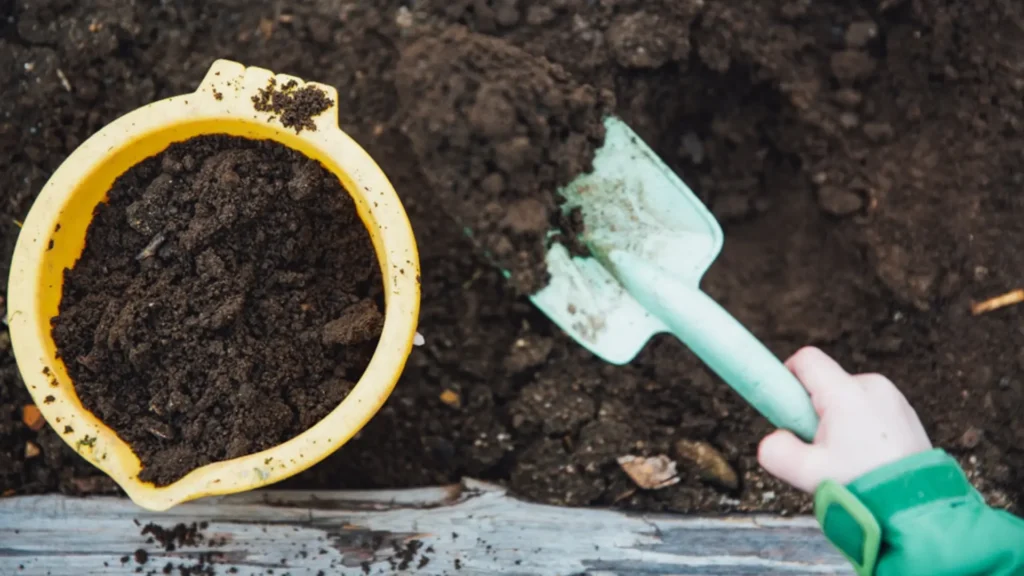
What Is the Influence of Composting on the Environmental and Economic Aspects of Circular Economies?
Composting plays a pivotal role in managing contaminated soils by absorbing, binding, and facilitating the precipitation of heavy metals, thus emerging as a cost-effective strategy for bioremediation. From an economic perspective, food waste composting transforms organic waste into value-added products ideal for diverse agricultural applications, providing a more affordable substitute for synthetic fertilizers. Furthermore, when considering operational expenses, the total net gain from compost production can accrue to millions of USD annually, demonstrating the significant economic potential of composting in circular economies.
To Cite this article:
‘A.S. Nizami. Harnessing the Potential of Food Waste Composting: Toward Green Revolution in Circular Economies. 2023. Publication & Data. Green Flagship.’

